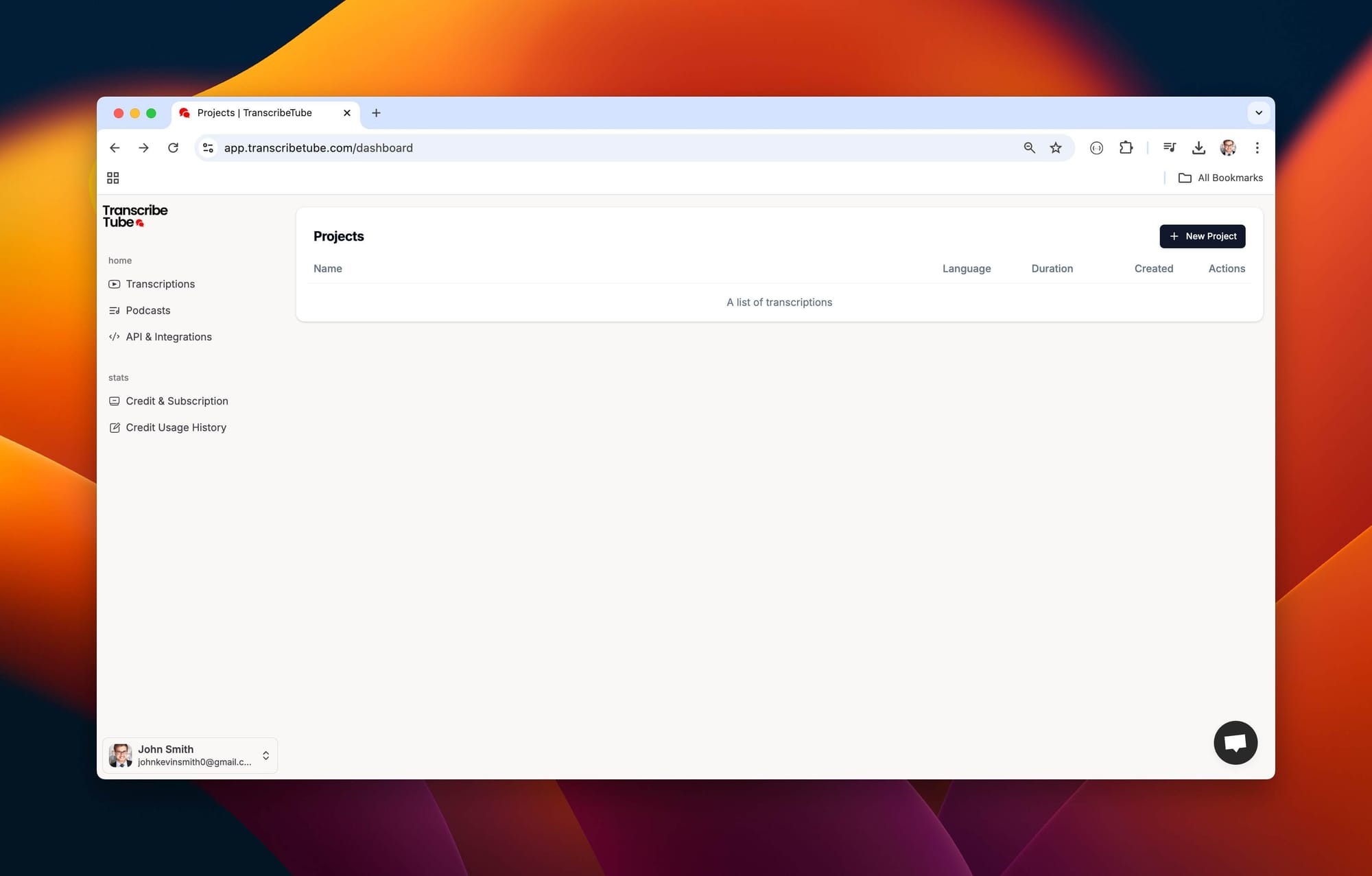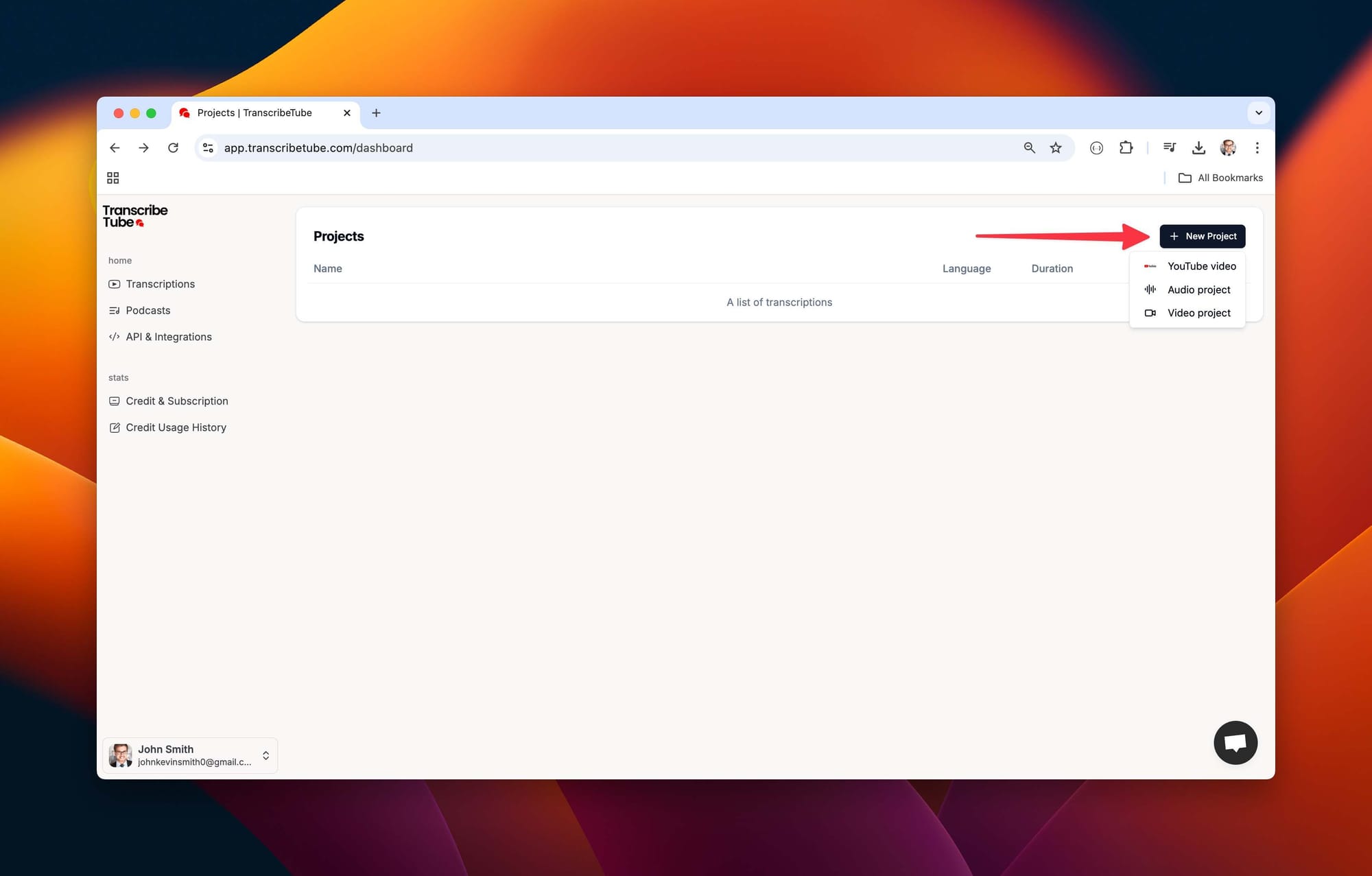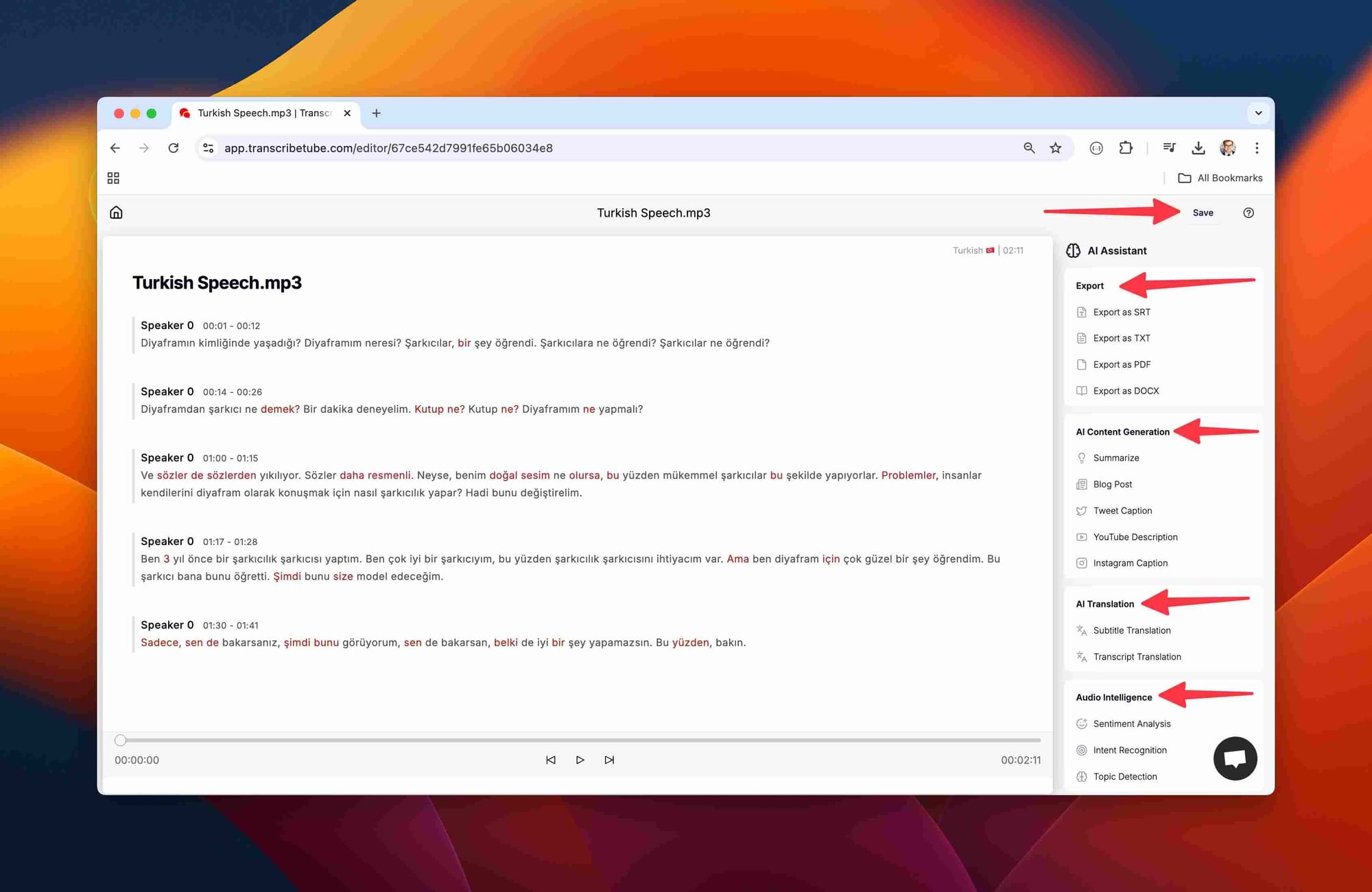Transcribing audio content in one's native language can be challenging enough, but when the audio content is in a foreign language, the difficulty level can undoubtedly shoot up. One such language that holds immense importance on a global scale is Turkish.

In this blog, we will explore the intricacies of transcribing Turkish audio to text, allowing us to understand the importance and relevance of this action in today's landscape.
Importance of Transcribing Turkish Audio to Text
Transcription, or the process of converting audio content to written form, is an integral process that spans multiple industries - whether it's media, business, education, or even legal. Especially in the case of the Turkish language, transcription allows for a wider reach of content. By bridging the gap between the spoken and written word, it ensures better understanding, facilitating communication.
In addition to accessibility, it provides SEO benefits, leading to increased visibility of content online, and also aids in data analysis by transforming verbal data into a format that is easier to analyze.
Relevance of Turkish Language in Contemporary Times
With more than 75 million native speakers, the Turkish language is the most widely spoken of the Turkic languages. Its relevance in contemporary times is underscored by the country's strategic location as a bridge between the East and West. As the official language of a nation that’s known for its historical, cultural, and economic significance, transcribing Turkish content correctly can have considerable benefits across various fields.
Please proceed to the next section to understand why it becomes necessary to transcribe Turkish audio to text.

Why Transcribe Turkish Audio?
Transcribing Turkish audio gives rise to several benefits. Here’s a comprehensive overview of why transcribing Turkish audio or video to text is essential in today’s day and age.
Accessibility and inclusivity
Transcripts provide alternative access to information for those who have difficulty hearing or those who have specific learning preferences. By transcribing Turkish audio to text, you create a medium that is more accessible and inclusive to a broader audience. For individuals who are deaf or hard of hearing, transcriptions can allow them to experience and understand content they otherwise would not be able to access.
Multilingual Communications
The world today is more interconnected than ever, and businesses and institutions often deal with partners, suppliers, and customers who speak different languages. Transcribing Turkish audio to text is the first step in translating that content into another language. It allows non-speakers to understand the content by reading the translated text and increases the reach of the content to a multilingual audience.
SEO Benefits
Search engines are text-based. They need text to understand the content of web pages. Providing transcripts of Turkish audio content makes it easier for search engines to crawl, helping your content rank higher in searches. This SEO benefit leads to increased visibility, more visitors, and higher user interaction.
Easier Referencing and Data Analysis
Finally, transcribing Turkish audio to text allows for easier referencing and data analysis. For researchers, having data in written form can make it easier to gather insights. Similarly, in settings like interviews or meetings, transcriptions can help to accurately capture and record spoken content, facilitating easy reference at a later date.
Now that we’ve understood the importance of transcription, let's move on to the transcription methods.

Transcription Methods
Transitioning from Turkish audio or video content to text representation involves employing certain methods. Each method has its unique characteristics, along with specific pros and cons. Let's delve into the details of each.
Manual Transcription
Manual transcription is the first method in consideration. This process involves a transcriber listening to the audio and typing out the content. While it can be time-consuming, it often provides the most accurate results as the transcriber can grasp the context and alternatively phrase certain segments for a clearer understanding.
Pros and Cons
Pros:
- High accuracy
- Better understanding of context
Cons:
- Time-consuming
- Requires skilled personnel
In some cases, the manual transcription method might be time-inefficient. This is where automated transcription becomes a handy alternative.
Automated Transcription Tools
Automated transcription tools have arisen as a staple in converting audio to written content. By leveraging algorithms and high-end technology like Artificial Intelligence (AI) and Natural Language Processing (NLP), these tools can translate spoken words into written content. They can be a time-efficient yet cost-effective solution for transcriptions but may not always be as accurate as the manual approach.
Pros and Cons
Pros:
- Time-efficient
- Cost-effective
Cons:
- Sometimes lack accuracy
- Might struggle with understanding context
Professional Transcription Services
The third method calls into use professional transcription services that employ skilled transcribers to manually transcribe the audio and at times also couple it with automated transcriptions for a fast yet accurate result. Utilized widely when a very high level of accuracy is needed, such as in legal or professional settings, professional transcription services can be a balanced combination of the two aforementioned methods, albeit slightly higher on the cost end.
Pros and Cons
Pros:
- High accuracy
- Handles complex files effectively
Cons:
- Can be costly
No single transcription method is superior to the others. The choice between manual transcription, automated transcription tools, and professional transcription services depends entirely on your specific needs, resources, and the complexity of the audio or video content.
As we move forward, let's take a closer look at the top tools you can use for transcribing Turkish audio to text.
Apologies for the confusion earlier. Below is the detailed description of the first tool in Markdown format as requested along with the table.
Best Tools for Transcribing Turkish Audio
Transcribetube
First on the list is Transcribetube, an innovative transcription tool that leverages high-end technologies such as AI to provide swift and efficient transcriptions. Its primary focus is on enhancing user experience and delivering accurate transcripts.

Features
- Multilingual support
- High-speed, automated transcription function
- Intuitive text editor for transcript corrections
Pros and Cons
Pros:
- Robust and user-friendly interface
- Time-efficient transcription process
- Handles multilingual content
Cons:
- Automated transcriptions may require manual proofreading and refinements for accuracy
Pricing
Transcribetube offers free transcription for the first 40 minutes. For further use, premium plans begin at €9.99 per month.
Sonix
Sonix is a cloud-based transcription tool known for its automated transcription accuracy. It uses advanced algorithms and AI to transcribe audio, making it a great tool to transcribe Turkish audio into text.

Features
- Easy-to-use online text editor to refine transcriptions
- Timestamps and speaker differentiation
- API support for integration
Pros and Cons
Pros:
- Superior accuracy
- Fast transcription processing
Cons:
- Pricing may be high for some users
Pricing
Sonix offers a free trial of 30 minutes. The paid services start at $10 per hour of transcription.
Happy Scribe
Happy Scribe is a comprehensive transcription tool that stands out for its high precision and quick turn around times. The platform supports over 119 languages including Turkish and employs both Automatic Speech Recognition (ASR) and human transcribers to ensure excellent accuracy.

Features
- Automatic and Human transcription services
- Supports over 119 languages
- High accuracy
Pros and Cons
Pros:
- Multi-language support
- Quick processing times
Cons:
- Does not have a free tier
Pricing
Happy Scribe charges €12 per hour, but it does offer a free trial for users to test the service.
These are only a few of the many transcription tools available on the market, each with their unique pros and cons. It's always a good idea to explore and test a few options to see which one matches your requirements and budget best.
Step-by-Step Guide to Transcription
Transcribing audio content to text may seem rather daunting, especially if the language isn't one you're fluent in. However, the right transcription tool can aid in making this process simple and straightforward. Here, we would be shedding light on how to use one of the top tools - Transcribetube - for transcribing Turkish audio to text.
Create an account on Transcribetube
To get started, you would need to register on Transcribetube. Head to Transcribetube's main webpage, look out for the 'Sign Up' button, and follow the prompts to create your account. Duly register your account to gain access to Transcribetube's services.

1) Navigate to dashboard.
Once you're logged in, it's time to transcribe your first video.
How to: Navigate to your dashboard, you can see a list of transcriptions you made before.

2) Create a New Transcription
Once you're logged in, it's time to transcribe your first video.
How to: Navigate to your dashboard, click on 'New Project,' and select type of the file of recording you want to transcribe.

3) Upload a file to get started
After you select the type of file you want transcribe, upload it tool to start transcription process.
How to: Simply drag or select your file that you want to describe and then choose language you want for transcript.

4) Edit Your Transcription with
Transcriptions might need a tweak here and there. Our platform allows you to edit your transcription while listening to the recording, ensuring accuracy and context.
You may also export transcript in different file options, and also many options using AI is possible.
After all your work done, you may save your transcript from upper right corner.

Tips for Improving Transcription Accuracy
Despite the technological advancements enabling transcription tools like Transcribetube, perfect accuracy is not always guaranteed. Therefore, putting some strategies into action can enhance the transcription accuracy. Here are some important tips:

Clear Audio Quality
Transcription, whether manual or automated, is highly dependent on the audio quality. A clear and high-quality audio file is more likely to produce an accurate transcription. So, when recording, it's best to do so in a quiet environment, using a good quality microphone, and ensuring the speaker’s pace is steady and clear. Background noises can significantly affect the precision of the transcript, making the review process tedious.
Speaker Identification
If you are working with audio files that have more than one speaker, it can help to identify each speaker in the audio. Most transcription services offer a feature that lets you tag different speakers in the transcript. This orderly approach not only eliminates confusion in dialogue-oriented transcripts but also allows readers to accurately follow conversation threads.
Use of Proper Nouns
Turkish, like any other language, has a wide range of proper nouns, unique names, places, and perhaps industry-specific jargon. As transcription tools might struggle to accurately transcribe these, it would be beneficial to review transcripts for the correct usage of these terms and names.
Handling Accented Speech
Accents and language nuances can pose challenges during transcription as people might pronounce the same word differently. This is especially true in Turkish, a language with regional dialects and variations. A careful review process can ensure any words affected by accents have been properly transcribed.
Manual Review
Even when working with advanced tools, human intervention is usually needed to ensure the accuracy of the resulting transcription. This means that regardless of how accurate a tool promises to be, the transcription should always be manually reviewed before considering it as final. If it's a long transcript, taking breaks helps maintain the quality of review.
Following these tips will significantly enhance the accuracy of your transcripts and elevate the entire process of transcribing Turkish audio to text.
Handling Turkish Dialects and Accents
Turkish, just like any other language, is rich in dialects and accents, varying across different regions and communities. When transcribing Turkish audio, understanding and handling these variations can be crucial for the accuracy of the transcriptions. Here are some tips on how to effectively handle Turkish dialects and accents in transcription:

Familiarize Yourself with the Dialect
Whether it is Eastern Anatolian, Thracian, or Istanbul Turkish, it is essential to familiarize yourself with the exact dialect of the audio you are transcribing. By gaining a deep understanding of the dialect’s unique phonetics and loanwords, you can significantly increase the transcription's accuracy. One way to familiarize yourself with the dialect is to immerse yourself in it – listen to local podcasts, watch regional shows or news broadcasts from the area.
Manual Correction
Regardless of the transcription method you use, when it comes to handling accents and dialects, manual review and correction become indispensable. As automated tools might struggle to accurately interpret accented speech or local usages, it is a good practice to review and correct the transcriptions manually.
Use a Native Transcriber
When dealing with specific dialects or accents, using a native transcriber can turn out to be extremely beneficial. Native Turkish speakers are inherently familiar with regional alterations and colloquial usages, thus, are less likely to make mistakes in the transcription. They are also better equipped to handle complex transcriptions, like multiple speakers or low-quality audio files.
Professional Transcription Services
Lastly, for complex files or professional needs, consider using professional transcription services that offer expertise in handling Turkish dialects and accents. In most cases, these services combine the speed of automated transcription and the accuracy of skilled human transcribers, making them a great option for transcribing accented speech or regional dialects.
Whether you are transcribing Turkish audio-to-text for business, research, or educational purposes, handling dialects and accents effectively is crucial for the overall transcription quality and accuracy.
Post-Transcription Editing
Once you have your Turkish audio content transcribed into text, the work typically isn't over. Post-transcription editing is crucial to ensure the final transcript's quality and accuracy. Here are some steps involved in this process:

Review the Transcription
The initial step in post-transcription editing is to perform a general review of the transcription. Look through the document for any glaring errors or sections that may feel out of place. Also, check that the transcription aligns with the overall context of the audio content.
Pay Attention to Grammar and Spelling
Although many transcription tools have built-in grammar and spelling checks, they might not always catch every error. Therefore, it is essential to ensure correct grammar and spelling manually, especially with Turkish where nouns are always capitalized, and certain grammatical structures differ from English.
Check Punctuation
Correct punctuation is essential to maintain the flow and tone of the text, making the transcript easier to read and understand. Ensure the appropriate placement of full stops, commas, and question marks for accurate sentence breaks.
Compare Against the Original Audio
After making the initial edits, compare the transcript against the original audio for any discrepancies. Following along with the transcript while listening to the original audio can help you catch any errors or omissions that were initially overlooked.
Proofread
Finally, do a thorough proofread of your translation. Reading out loud can often help you identify awkward phrasings or improper grammar.
By meticulously following through with these steps, you can enhance the overall quality, readability, and accuracy of your transcriptions, providing a polished and professional end product.
Transcribing Turkish audio into text is an important process that facilitates accessibility, inclusivity, and wider communication, whether in business, media, any other professional setting, or just casual learning. The transcription process involves various methods and tools, each with specific strengths and limitations.
While the process can be straightforward, nuances like accents, dialects, and complex official jargon can present challenges. However, adopting a meticulous review system and considering professional services if required can boost your transcription's accuracy.
This process's importance cannot be overstated, especially considering the increasing globalization and significant value that Turkish holds in the contemporary world.
Are you ready to transcribe your Turkish audio content to text? Leverage these tools and tips to start your transcription journey today!
Whether you are a seasoned professional or a grammar-enthusiast wanting to try out transcription, remember that the sky's the limit. Try out different tools, techniques, gauge their effectiveness and continue to learn and grow. Happy transcribing!
Frequently Asked Questions
Let's explore some common questions that users often raise about transcribing Turkish audio to text:
Why is it important to transcribe Turkish audio to text?
Transcribing Turkish audio to text extends the accessibility of the content to a wider audience. This includes individuals who have hearing difficulties, or who prefer reading over listening. Transcriptions also enable better understanding, analysis, and referencing of the data. Moreover, they offer SEO benefits by making the content more identifiable to search engine indexing.
Can any transcription tool handle Turkish dialects and accents?
While most transcription services do support a variety of languages, including Turkish, handling accents or unique regional dialects might be more challenging. However, premium services often offer high accuracy levels even with regional accents and dialects. Post-transcription manual checks and corrections can significantly improve the accuracy.
Can I manually transcribe Turkish audio if I am not a native speaker?
While anyone who has a good level of understanding of the language can perform manual transcriptions, non-native speakers may struggle to interpret certain words or cultural nuances. Hence, using transcription tools or professional services for this task might be more efficient and effective.
Are free transcription tools good enough?
Free transcription tools, while budget-friendly, may not always offer the same accuracy or features as the paid versions. Depending on your specific needs and complexity of your audio, a premium service might prove more beneficial.
These are just a few of the many questions that you might have about transcribing Turkish audio to text. Remember, the more you explore and learn, the better your transcription skills will get. Keep practicing!
Check other articles you may want to check:
How to Convert MP3 to Text Transcription? (Easy & Free Way)
How to Transcribe a Recording? (Free & Easy Solution)
How to Transcribe Spanish Audio to Text


.jpg)

